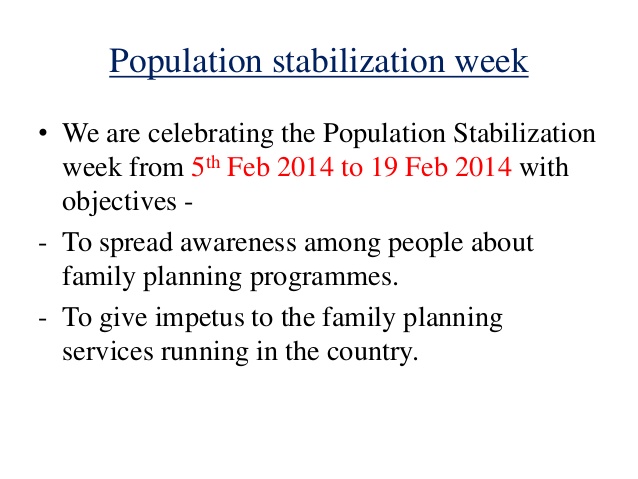Population Stabilization – Environment Notes – For W.B.C.S. Examination.
জনসংখ্যা স্থিতিশীল – পরিবেশ বিদ্যার নোট – WBCS পরীক্ষা।
Amongst the vast syllabus of W.B.C.S Examination, this part is quite easy to read and recollect and also fetches good marks.Biological diversity, or biodiversity, is the scientific term for the variety of life on Earth. It refers not just to species but also to ecosystems and differences in genes within a single species. Biodiversity is the key indicator of the health of an ecosystem.As per World Population Prospect: The 2012 Revision, the population of India is likely to be 1620 million, while the population of Republic of China is likely to be 1385 million by 2050.Continue Reading Population Stabilization – Environment Notes – For W.B.C.S. Examination.
The projection of population of India by the year 2050 has not been made by the Government. However, as per population projection made by the Government, the population of India is likely to be 1399.8 million by the year 2026.
Government of India has been implementing the National Rural Health Mission since 2005 in line with the policy framework of population stabilization as envisaged in NPP-2000, by helping to create a robust service delivery mechanism to address the unmet need for family planning. Government of India is also addressing the social determinants of health, paramount among which are female literacy, women’s empowerment and age at marriage.
The Government has taken a number of sustainable measures for stabilization of population. As a result of which the percentage decadal growth rate of the country has declined significantly from 21.54% for the period 1991-2000 to 17.64% during 2001-2011. Total Fertility Rate (TFR) has also declined from 3.6 in 1991 to 2.4 in 2012 as per Sample Registration System (SRS). Details of the measures taken by the Government of India and the achievement thereof aregiven below:
Measures being taken for stabilization of population in the country along with success achieved therefrom:
On-going Interventions under Family Planning Programme
- A rational human resource development plan is in place for provision of IUCD, Minilap and NSV to empower the facilities (DH, CHC, PHC, SHC) with at least one provider each for each of the services and Sub Centers with ANMs trained in IUD insertion
- Ensuring quality care in Family Planning services by establishing Quality Assurance Committees at state and district levels
- Emphasis on MinilapTubectomy services because of its logistical simplicity and requirement of only MBBS doctors and not post graduate gynecologists/ surgeons.
- Increasing male participation and promotion of ‘Non Scalpel Vasectomy’’.Do follow previous years question papers for better understanding of the types of questions asked.
- ‘National Family Planning Indemnity Scheme’ (NFPIS) under which clients are insured in the eventualities of deaths, complications and failures following sterilization and the providers/ accredited institutions are indemnified against litigations in those eventualities.
- Compensation scheme for sterilization acceptors – under the scheme MoHFW provides compensation for loss of wages to the beneficiary and also to the service provider (& team) for conducting sterilizations.
- Accreditation of more private/ NGO facilities to increase the provider base for family planning services under PPP.
- Improving contraceptives supply management up to peripheral facilities
- Demand generation activities in the form of display of posters, billboards and other audio and video materials in the various facilities
- Strong Political Will and Advocacy at the highest level, especially in states with high fertility rates.
Please subscribe here to get all future updates on this post/page/category/website


 Toll Free 1800 572 9282
Toll Free 1800 572 9282  mailus@wbcsmadeeasy.in
mailus@wbcsmadeeasy.in



















































































































